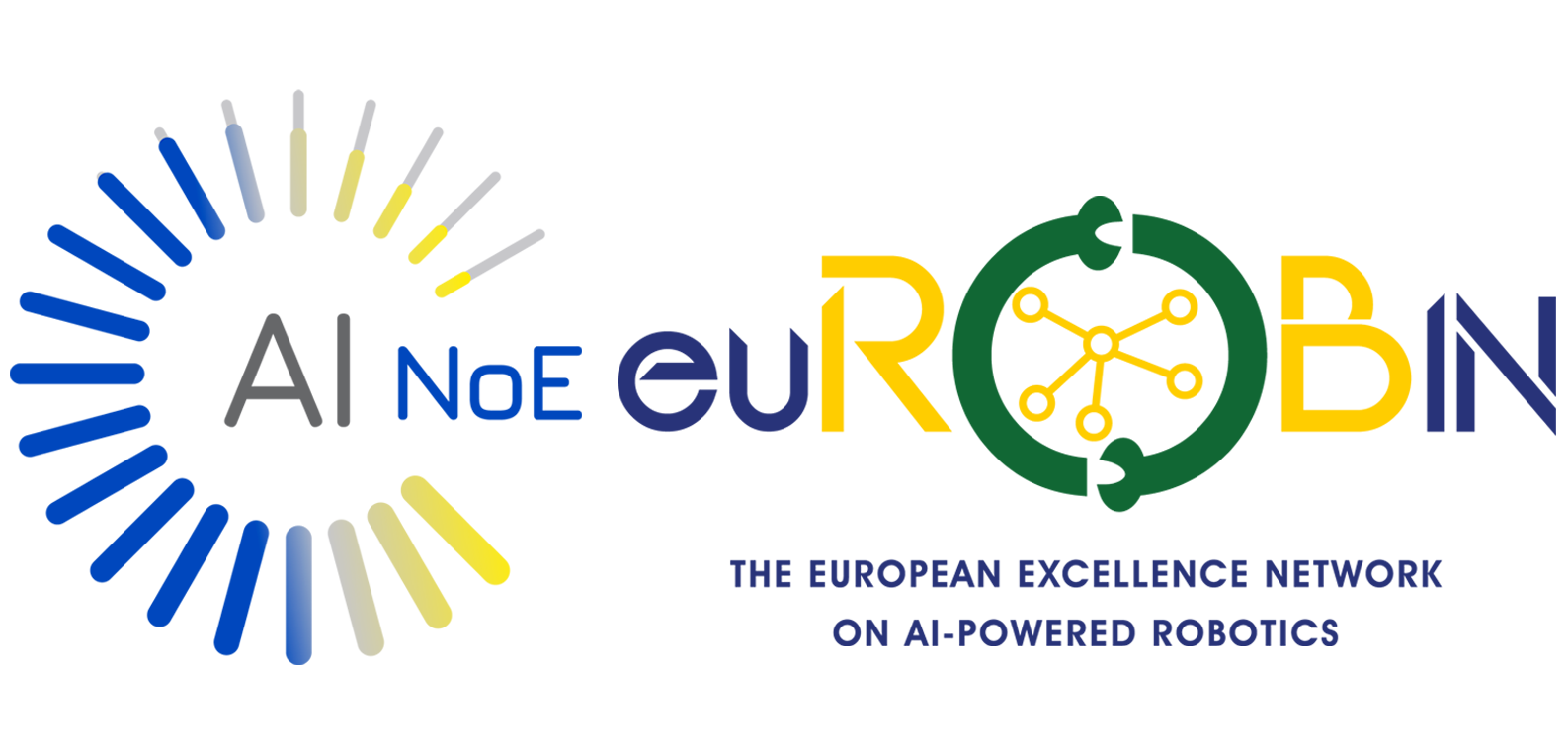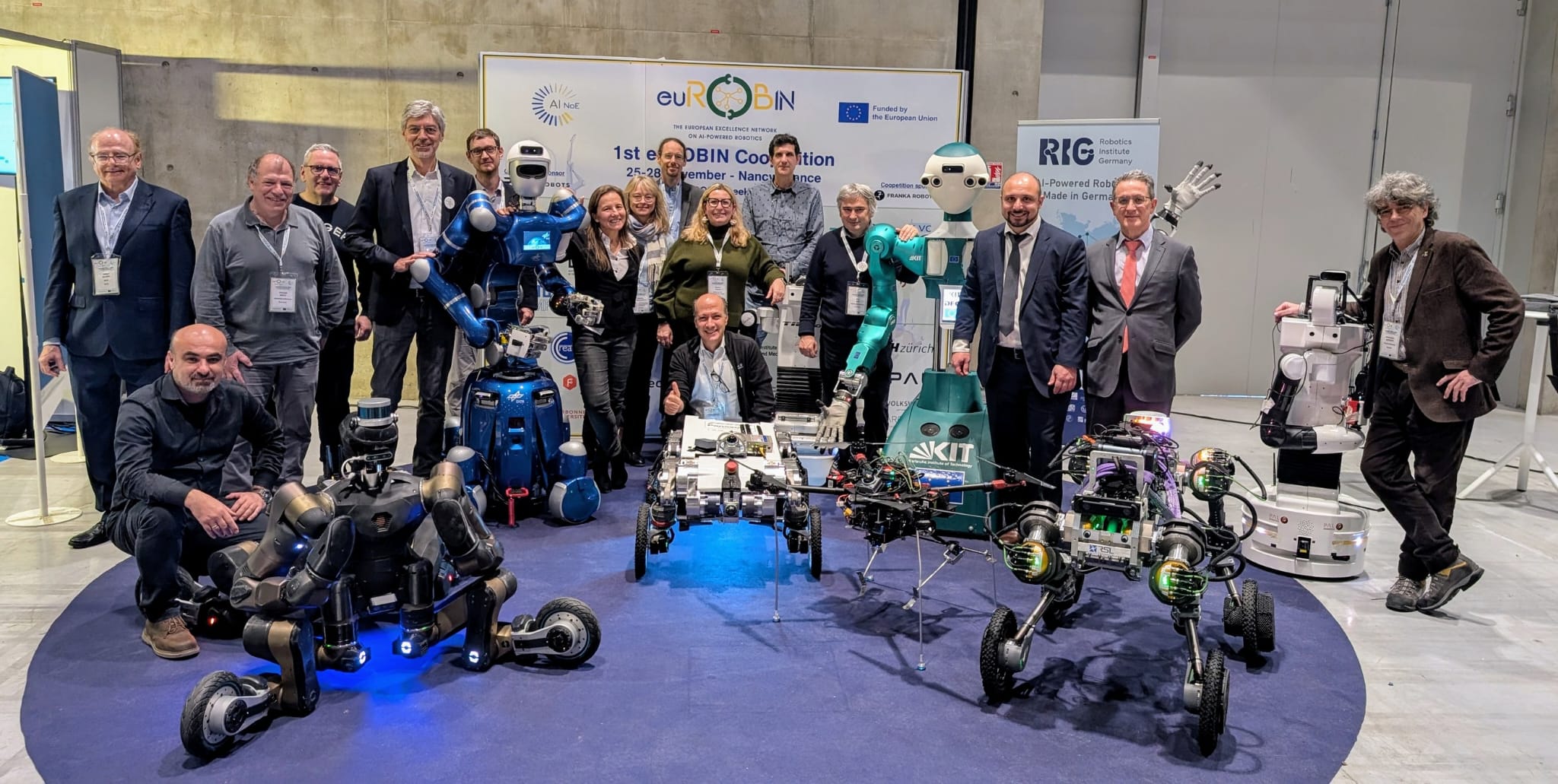ABSTRACT
Occupational exoskeletons are not yet frequently used at work. Previous research has indicated multiple factors (physiological, implementation-related, work-related, policy, and psycho-social) that can explain this lack of adoption. However, there is a lack of specific requirements related to these themes to improve exoskeletons and their adoption. Therefore, the goal of our research is to formulate concrete requirements for the design and implementation of exoskeletons. We used a design ethnography approach (focus groups, an interview, observations, surveys, and group interviews) with multiple stakeholders (users, designers, and potential future users). Our data suggest that potential future users of exoskeletons believe that existing exoskeletons should be improved to be adopted. Exoskeletons should be more comfortable to wear and flexible enough to support a wider range of tasks. We have formulated 49 requirements for occupational exoskeletons, and we validated and extended an existing framework. Our work encourages the improved design of future or existing exoskeletons.
Fatma Demir, Ellen Roels, Seppe Terryn, Bram Vanderborght
ABSTRACT
Contribution: This article presents an engineering outreach activity that aims to teach K-12 students how to develop a tendon-based soft robotic finger. The primary objectives of this STEM activity are to introduce students to the fundamentals of soft robotics, its interdisciplinary nature, and to offer them a hands-on and engaging learning experience using the project-based- learning approach. Background: Soft robotics, an interdisciplinary field combining chemistry, materials science, and robotics, has the potential to revolutionize the design and development of robots. However, introducing the fundamental concepts of soft robotics to K-12 students can be challenging since traditional robotic activities often require complex programming, technical expertise and expensive equipment and software. Intended Outcomes: Increasing the students' understanding of soft robotics principles, materials, and polymer processing. Positively impacting students' perception of engineering as a potential career path by enhancing their attitudes toward STEM. Application Design: Students could develop manually actuated soft robotic fingers within a 45-min workshop by utilizing 3-D printed molds, rapidly curing elastomeric materials, and the basic mold casting method. The outreach activity is intentionally designed to simplify the technology used by eliminating the need for complex programming, and to focus on utilizing novel materials and basic concepts to construct actuating soft robots, providing an effective and engaging STEM activity for K-12 students. Findings: The success/effectiveness of the activity was evaluated in three ways: 1) through direct inspection on the performance of the student-fabricated soft finger during the workshop; 2) through the pre- and post-tests to evaluate the learning outcomes; and 3) by conducting a STEM outreach survey to gather student feedback on the quality of the outreach activity and their attitudes toward STEM. During the workshop activities, the students were able to effectively follow the instructions, construct a tendon-based soft robotic finger, and manually actuate the finger using the tendon. According to the results of pre- and post-tests, the students increased their understanding regarding the principles of soft robotics, materials and polymer processing. Furthermore, the STEM outreach survey of IEEE powered 'TryEngineering Portal' revealed that the developed outreach activity enhanced the achievement of pedagogical and quality outcome goals and measures, as well as program targets and objectives.
The first Newsletter of the euROBIN project is here, a biannual bulletin in which we will share all the progress and achievements of this exciting project.
In this first edition, from July to December 2024, you will find a summary of the different initiatives that have been carried out, results of scientific research on robotics and automation and events in which we have shared and learned a lot. Everything that during these last 6 months has made all those people (and robots :)) who are part of the euROBIN team work tirelessly.
Join us in this biannual reflection!
-
VIDEO euROBIN WEEK 2024
Our highlight of the year could not be other than eurobin week 2024, held from 25-28 November in Nancy (France). An event that we have been working on for many months with the whole euROBIN team and that was undoubtedly a great success for the world of robotics and artificial intelligence in Europe. Proof of this is this video where you can see the great moments and demonstrations of the teams participating in the 1st euROBIN Coopetition. Click to video.

-
euROBIN WEEK 2024 INTERVIEWS
During euROBINWeek2024, we took the opportunity to conduct interesting interviews with the main protagonists of this event. You can watch them all on our Youtube channel and, of course, subscribe to it! Go to Youtube channel

-
euROBIN OPEN CALLS
- euROBIN's 1st Open Call for Collaborative Projects - The 1st Open Call enables innovative organisations to obtain up to 60,000 euros of funding to validate and demonstrate AI and robotics technologies by offering a variety of tools, datasets and software frameworks to create and test robotic solutions. Read more here
-
- euROBIN 3rd Open Call for the Technology Exchange - The 3rd Open Call of the Technology Exchange Programme consists of Nine selected researchers, companies or academic institutions will receive funding of up to 60,000 euros through this exciting opportunity to incorporate and test their robotics innovation. Read more here
-
- euROBIN Open Call Info Day- In addition, we had an Information Day with an online webinar so that all those interested could participate in these two great opportunities for the AI and robotics sector. Read more here
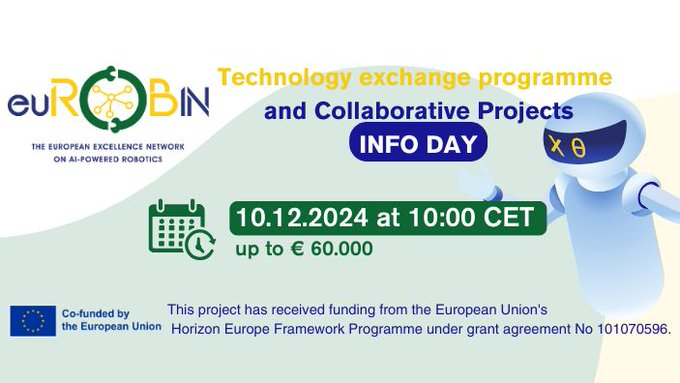
-
EUROBIN WEEK 2024
- Press Release euROBIN Week - To present this great event, we share this press release with the idea of inviting the media to know or cover this event in order to raise awareness of euROBIN Week 2024 and invite all interested media to attend. Read more here
- Information about the event - From a few months before and with special attention in the weeks leading up to euROBIN Week 2024, we shared all the information that could be necessary for the attendees: from registration at the event to information about Nancy. Also, of course, a detailed list with a Who is Who in the event and the robots and teams participating in the 1st euROBIN Coopetition. Read more here
- During euROBIN Week 2024...
-
-
EC Visit - During the event, we were visited by a delegation from the European Commission, to whom we showed the details of the Coopetition. Read more here

-
- Visit association «Codeurs en Herbe». We were also visited by the association ‘Codeurs en Herbe’, a programming and robotics school from Nancy with whom we carried out coding activities at the Coopetition. Read more here
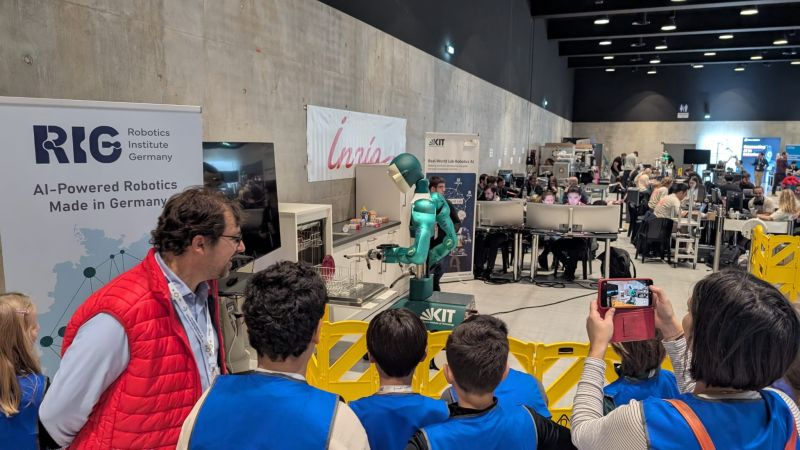
-
- Media -Live - Coverage During these days, several TV channels and media from different countries,where we held the event, came to make their live reports or record content to publish afterwards. Click to read: France3 Tv / Ici Nancy . News / Reuters / Report Reuters / France 3 Grand Est / Nancy press
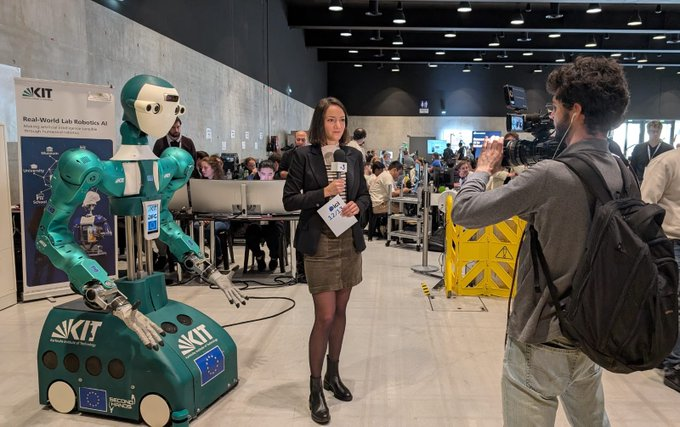
-
- Demos- demonstrations of the euROBIN Coopetition in the spotlight. Click here to First demos of day 1 / Click here to Demo robot coopetition
-
- Pictures - Media Gallery Click here
-
- Final During those days we saw humanoid robots, quadrupeds, drones... and above all, teams with great robotics and AI professionals participating in the 1st euROBIN Coopetition. It is very difficult to summarize in a few lines everything we experienced there, but we share with you a part of it in this post as well as the three winners of the Coopetition. Read more here
-
SCIENTIFIC ARTICLES
All parnerts of the euROBIN project continue their research day by day to advance the world of robotics. Some of them have shared their progress in interesting scientific articles. Click here to see them on our website.
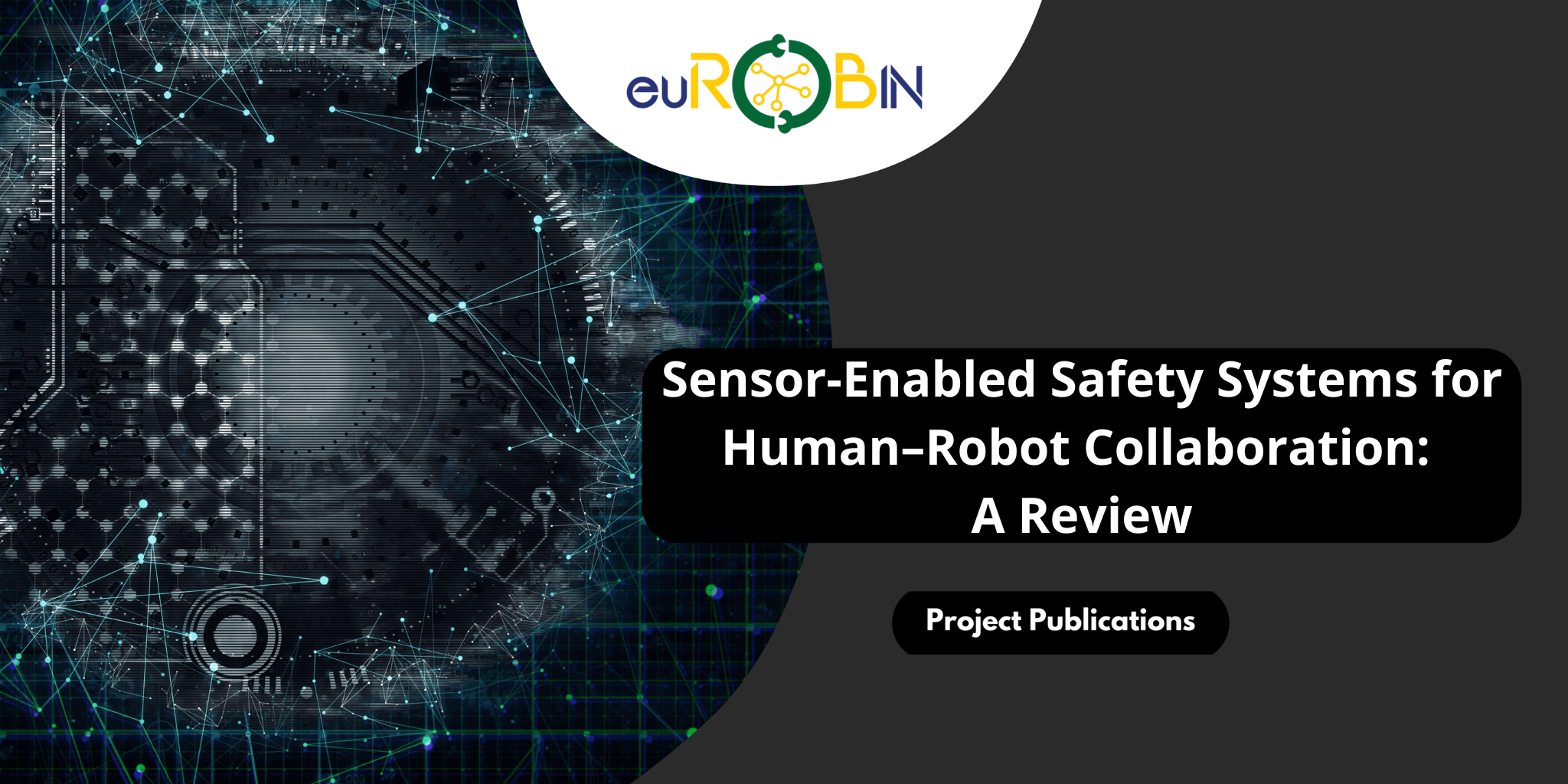
-
1000 FOLLOWERS
On the 15th of July our LinkedIn reached the fantastic figure of 1000 followers, a demonstration that the project continues to grow little by little. We ended the year with almost 1500 followers! The euROBIN Project is always on the social networks! Click here

As we conclude this edition of our newsletter, we reflect on the remarkable progress made by the euROBIN project in the last 6 months, especially with the celebration of the big euROBIN Week 2024 event where we were able to capture all the effort behind this project.
We extend our deepest gratitude to all our partners who have helped day after day to make this possible, from leading academic institutions to the most committed companies in robotics, automation and artificial intelligence. Thanks for your commitment especially to all those who participated in our 1st euROBIN Coopetition.
There is still a lot to do and to discover together.
We invite you to stay connected and continue this robotic journey with us.
Follow the euROBIN project on our social media platforms.
The euROBIN team
